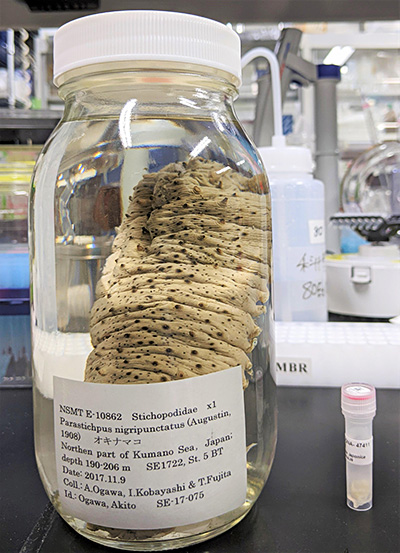
Click here for PC version
Click here for Smartphone version
| HOME >> Museum Facilities >> Center for Molecular Biodiversity research >> The Importance of Sample Preservation |

The Importance of Sample Preservation
Specimens utilized in scientific research must be preserved for long-term storage as “evidence” to ensure the credibility and reproducibility of research outcomes. For example, dried specimens and specimens immersed in preservation fluids that have been examined for their morphology are stored in specimen repositories for enduring preservation as voucher specimens. Whereas scientifically important morphological specimens such as name-bearing type specimens are required to be stored in perpetuity, DNA materials are often discarded once the DNA sequence information has been extracted, registered in public databases, and published in research papers. Even if a voucher specimen is retained, it can be challenging to obtain high-quality DNA from the same specimen again if the it has been dried or treated with chemicals, so research findings often cannot be validated later using the same individual.
To address this issue, it is essential to preserve tissue and/or DNA samples used in DNA research as “voucher specimens” for the DNA sequence information. Thus, a pivotal mission of the Center for Molecular Biodiversity Research is to semi-permanently preserve such samples to ensure the reproducibility of research outcomes.

To address this issue, it is essential to preserve tissue and/or DNA samples used in DNA research as “voucher specimens” for the DNA sequence information. Thus, a pivotal mission of the Center for Molecular Biodiversity Research is to semi-permanently preserve such samples to ensure the reproducibility of research outcomes.







